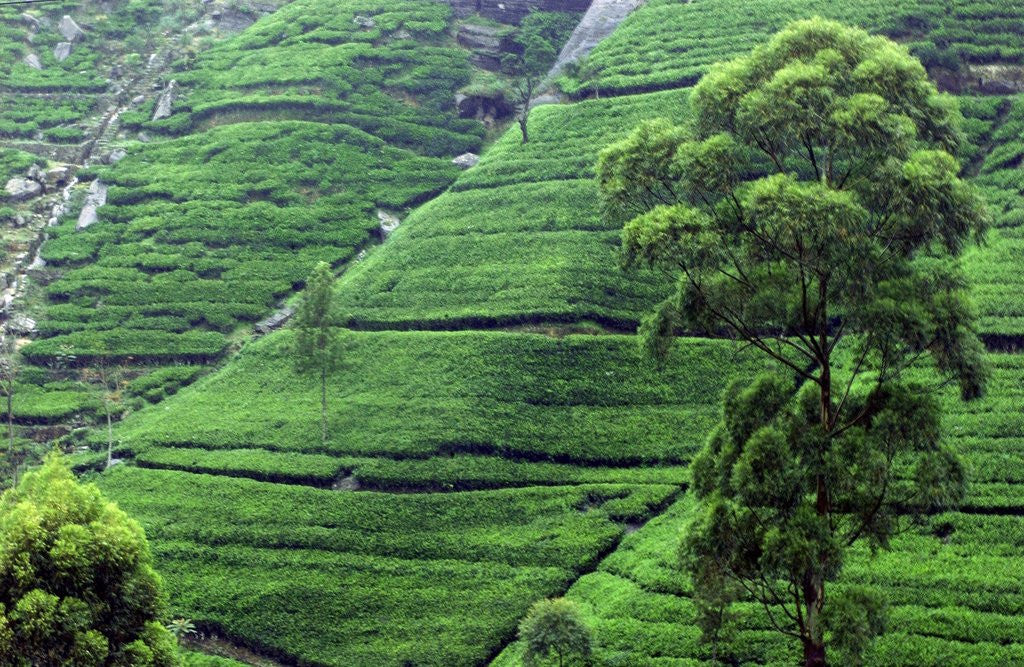In the last blog post I mentioned the three factors that determine the characteristics of tea. They are:
- The variety of Camellia sinensis
- The environment the tea plant was grown in (known as terroir)
- The way the leaf was processed
Last week we had a riveting discussion about Camellia Sinensis varietals and their effect on taste. Today, we will be discussing the second factor- terroir, or as I like to call it, “The Taste of Place.”
Terroir is a French word originally used to represent the growing conditions for wine. The powers that be in the tea world have adopted the term to describe the soil, climate, altitude, latitude, nearby crops, cultural traditions, and even the weather leading up to the day the tea plant was picked.
If you ever get confused about the definition of terroir, just remember that it is the earth, soil, and location in which the tea is grown. It is the “aura of place” that imparts itself into the tea plant.

Sri Lankan Tea Plantation
The tea plant has the amazing ability to constantly adapt to its environment. The same tea tree can taste different depending on its terroir. I once tasted a black tea from a plantation in Mississippi that had subtle berry notes. Lo and behold, when I talked to the plantation owner he told me that they grow blueberries right next to their tea. This is why knowing the plantation that your tea comes from is super important.
Tea trees grow best in mountainous terrain with a tropical or subtropical climate, and no region fits the bill better than Asia. On the slopes of high mountain ranges in Asia, warm days turn to cold nights. Sun exposure is reduced due to the constant mist. Under these conditions, the tea tree’s growth is slowed, but the payoff is the higher concentration of oils (flavor!).
Tea is grown all over the world in various types of terroir. At Leaf & Bean, we focus on sourcing teas grown in terroirs known for their ability to produce high quality specialty tea. That means getting teas from specific provinces and regions in the main countries of origin for tea (China, Japan, India, Taiwan, and Sri Lanka).

Tea Plantation in India, notice the steep slopes on this mountainous terrain. Perfect for tea.
There you have it. Terroir- one of the three factors that determine the characteristics of tea. It may not be talked about a lot, but boy is it important. Now you can go out and impress your friends with your knowledge of this fancy French term. Come back next week when I will talk about the different steps in tea production.
Drink up!
Charles

